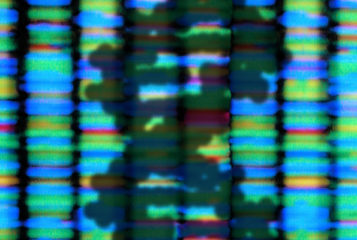Genes have been edited directly in the stem cells of a living organism, a new study has found. Scientists were able to modify genes in specific stem cells in adult mice using a virus.
The research could have significance in humans in future – being able to edit genes within a living patient would be a breakthrough for genetic disease therapies.
'If you want to change a genome to correct a disease-causing gene mutation, you have to change it in the relevant stem cells,' said lead scientist Professor Amy Wagers at Harvard University in Cambridge, Massachusetts. 'If you don't change the stem cells, whatever cells you do fix may eventually be replaced with diseased cells fairly quickly. If you do fix the stem cells, they will create healthy cells that can eventually replace the diseased cells.'
At the moment, gene therapy in humans involves taking the stem cells out of the body to edit their genes, then putting them back in. The process of removing and reintroducing these cells adds a risk of complications, which would be avoided if it were possible to target stem cells in a living patient directly.
'When you take stem cells out of the body, you take them out of the very complex environment that nourishes and sustains them, and they kind of go into shock,' said Professor Wagers. 'Isolating cells changes them. Transplanting cells changes them. Making genetic changes without having to do that would preserve the regulatory interactions of the cells – that's what we wanted to do.'
To achieve this, the researchers took advantage of different adeno-associated viruses, which can specifically target certain tissue types but do not cause disease. They engineered these viruses to deliver gene editing molecular machinery to mouse specific skin, blood and muscle stem cells or progenitor cells (a slightly more developed form of stem cell). These viruses were delivered into a specific strain of mice in which, if the cargo was successfully delivered to the target cells, a fluorescent 'reporter' gene in the cells would be activated and these cells would glow red.
The researchers saw that the reporter gene was turned on in up to 60 percent of the stem cells of skeletal muscle. In skin progenitor cells and blood stem cells, up to 27 percent and 38 percent of cells glowed red, respectively.
'Our study demonstrates that we can permanently modify the genome of stem cells, and therefore their progenies, in their normal anatomical niche,' said Dr Mohammadsharif Tabebordbar, study co-author at the Broad Institute, also in Cambridge. 'There is a lot of potential to take this approach forward and develop more durable therapies for different forms of genetic diseases. That includes different forms of muscular dystrophy, where tissue regeneration is such an important factor.'
The work was published in the journal Cell Reports.






Leave a Reply
You must be logged in to post a comment.